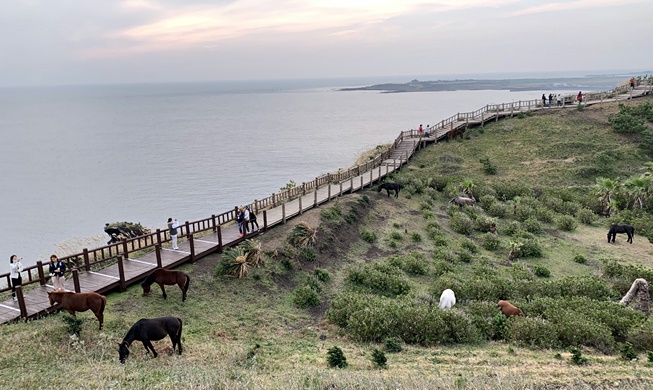Yu Hong-june, a prominent art historian in Korea and chair professor at Myongji University in Seoul, said in his book "My Exploration of Cultural Heritage," "The more you know, the more you see." Even if a place is famous or on a plain ordinary day, a landscape can be seen differently depending on one's knowledge and perspective.
This is the first of a Korea.net series on domestic cultural and tourist spots this year. For famous places easily found on the internet, we approach them from new perspectives focused on people and their stories. In addition, we cover ordinary spots often overlooked to promote them as potential tourist attractions. Thus readers can discover attractive aspects of the nation hidden throughout the country.
By Park Byung-gyu and Yoon Hee Young
Namhae-gun County, Gyeongsangnam-do Province
Videos = Lee Jun Young, Korea.net's YouTube channel and Ven. Jibong
A crucial element to check before traveling is the weather. Though serving as a crucial element of a trip, the weather is a variable beyond human power. Once basic tasks including the schedule, transportation and accommodations are complete, one can only pray for nice weather.
Everyone wants a blue sky, crystal-clear ocean, green vegetation, colorful flowers or pure-white snowy fields, though a perfect trip that meets every desired condition is impossible. Thus a traveler should merely try his or her best to deal with the given conditions.
Korea.net staff on April 13 visited Namhae-gun County, Gyeongsangnam-do Province. The sky was cloudy, the wind blew strong and rain occurred from time to time. The clear ocean, often called "the Mediterranean of Korea," was murky with rolling waves and the wind was rather dismal for a warm southern city in April.
Considering that the island on a clear and sunny day is easily found online while that on a cloudy day is not, cloudy weather offers the best way to view the island from another perspective. This paradoxically offers an optimal condition to appreciate Namhaedo Island, or Namhae in short, from another perspective. The sound of the waves created by strong winds is distinct from that heard on sunny days.
Namhae is the fifth biggest among 3,300 islands in Korea. Located in the southernmost part of the Korean Peninsula, it is far from Seoul. The island is hardly a well-organized tourist spot due to its inconvenient traffic but offers the perfect place to saunter amid an unadorned view of Korea's fishing hamlet as well as discovering old stories.
The sea between the islets in the Jijok Strait of Samdong-myeon Township is captivating with jukbangnyeom (bamboo fishing weir) and sukbangnyeom (stone fishing weir), two traditional fishing methods.
A once old and shabby refrigeration warehouse in the fishing village has been turned into a complex cultural space that harmonizes with nature. Space Mijo in Mijo-myeon Township has transformed a heat exchanger into installation art and an ice tank into a performance hall, providing the foundation for culture and art blending in with residents. The interior will be gradually filled with spaces like exhibition and performance halls, cafes, restaurants, boutique shops and residences for artists.
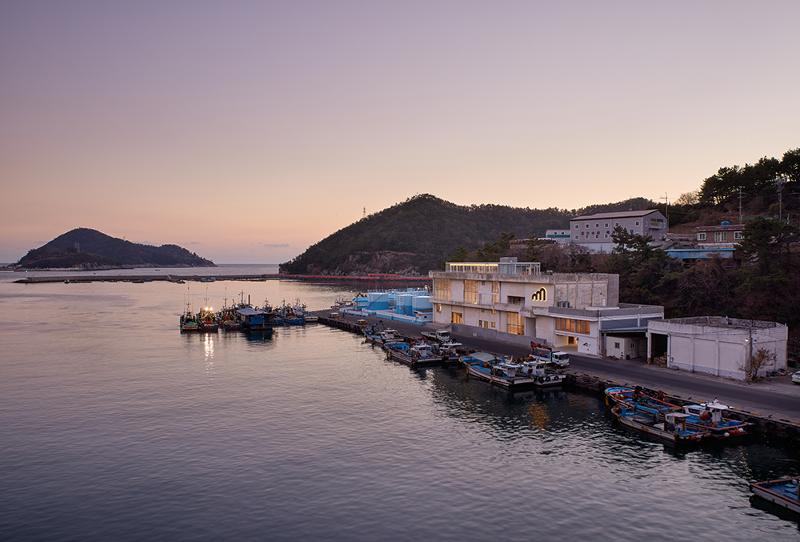
Space Mijo is a complex cultural space where culture and art blend in with residents. (Rohspace)
The county also features interesting sites including the German Village, which was built by Korean miners and nurses who worked in Germany during the 1960s, and the American Village, which has a Statue of Liberty replica and Metasequoia Road.
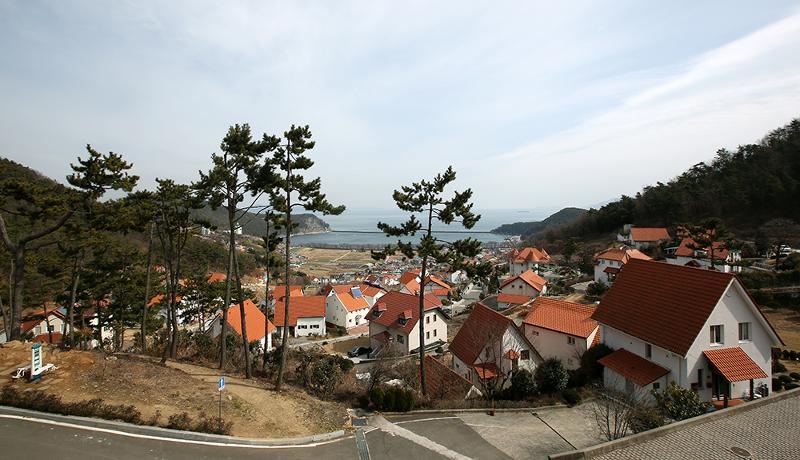
The German Village in Samdong-myeon Township, Namhae-gun County (Jeon Han)
The hidden charms of the overcast island can be found in the mountains as well. Geumwangsa Temple in Idong-myeon Township presents a picturesque view with clouds lying at one's feet.
Geumwangsa also boasts strange rocks at a glance. The natural sculptures are calmly welcoming by showing reflections such as the statue of Buddha, phallus or Iron Man mask depending on angle.
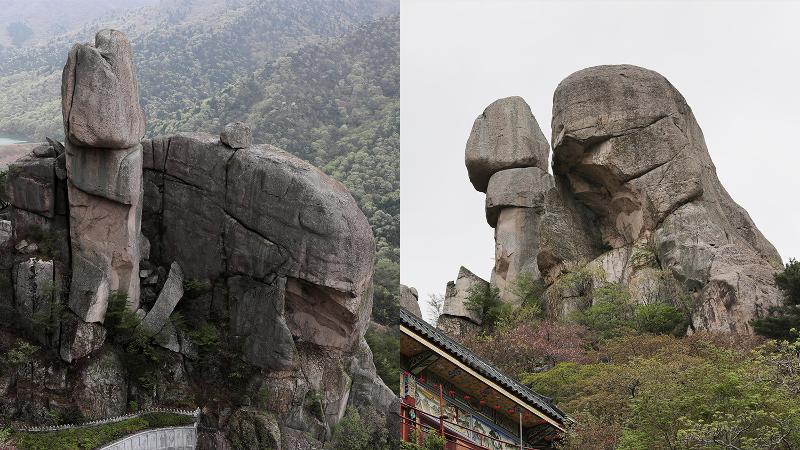
Strangely shaped rocks are in and around the Buddhist temple of Geumwangsa. (Lee Jun Young)
Unlike domestic tourists who swiftly leave a spot once they finish taking pictures, their foreign counterparts tend to spend hours observing the rocks. During a conversation with a Buddhist monk at a cozy attic in the middle of a mountain, he gave a wise answer to the silly question of what he thinks about while looking at the rocks: "What thoughts? I think about nothing."
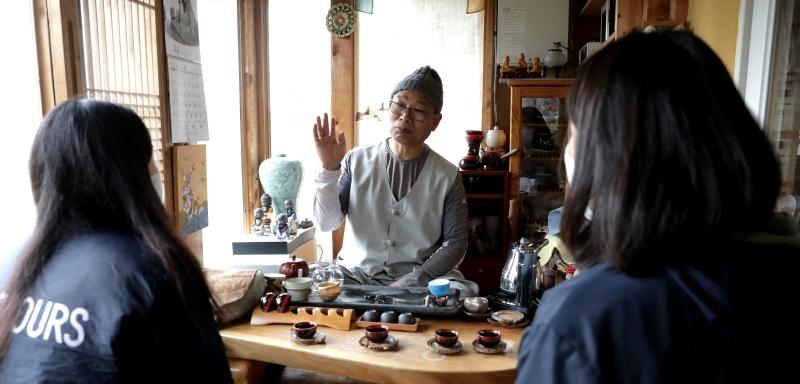
Korea.net reporters hold a conversation over tea with the Buddhist monk Jibong at Geumwangsa Temple. (Lee Jun Young)
Isn't this how one should feel when planning to visit Namhae?
bgpark71@korea.kr
![[Hidden charms of Korea: Namhae] ② Stories of a tourist hotspot](/upload/content/image/c324412691c944c9ba33d6f535b813d1_20220426155551.jpg)
![[Hidden charms of Korea: Namhae] ③ Exploring 'treasure island'](/upload/content/image/74d2c17bb0b14fba836dd57fb7a2acfe_20220426171319.jpg)
